You need to trim a mango tree to keep it healthy. It allows airflow and the tree to focus its energy on growing fruit rather than growing larger.
When we purchased our home in Florida, we may have been most excited about being able to grow citrus and tropical fruit trees!
Top of that list was the mango tree!
Visions of tree-ripened mangoes danced through our heads.
Think mango smoothies…mango salsa…mango salads…

Originally, we were not here full time and we did not properly care for the trees. The overgrown lot next door kept trying to reclaim our little fruit tree grove and there were a couple of times it almost succeeded!
We decided it was best to hire a tree care service that specialized in Florida fruit trees.
Afterall, what did we know about pruning mango trees…
Long story short, we kept paying them to spray nutrient spray, fertilize them, and spray for bugs.
We ended up with bugs between the leaves of every last citrus tree and severe sooty mold on the mango tree leaves that would not go away.
This continued for longer than I care to admit until I got so fed up with it that I proclaimed…
I WILL TAKE OVER THE CARE OF OUR TREES!
Side note: I knew nothing about caring for these trees.
The Research Began
I researched greening on citrus trees, how to get rid of bugs between the leaves, mold on mango leaves, how to trim a mango tree, how to trim an avocado tree, how to trim a lemon tree, what is neem oil, how to use neem oil, etc, etc and ETC!
I soaked in as much information as I could.
And then…I forgot most of it!
So, once I removed as much of the sooty mold from the mango tree as I could, I decided to start by trimming the mango tree because I read how important it was.
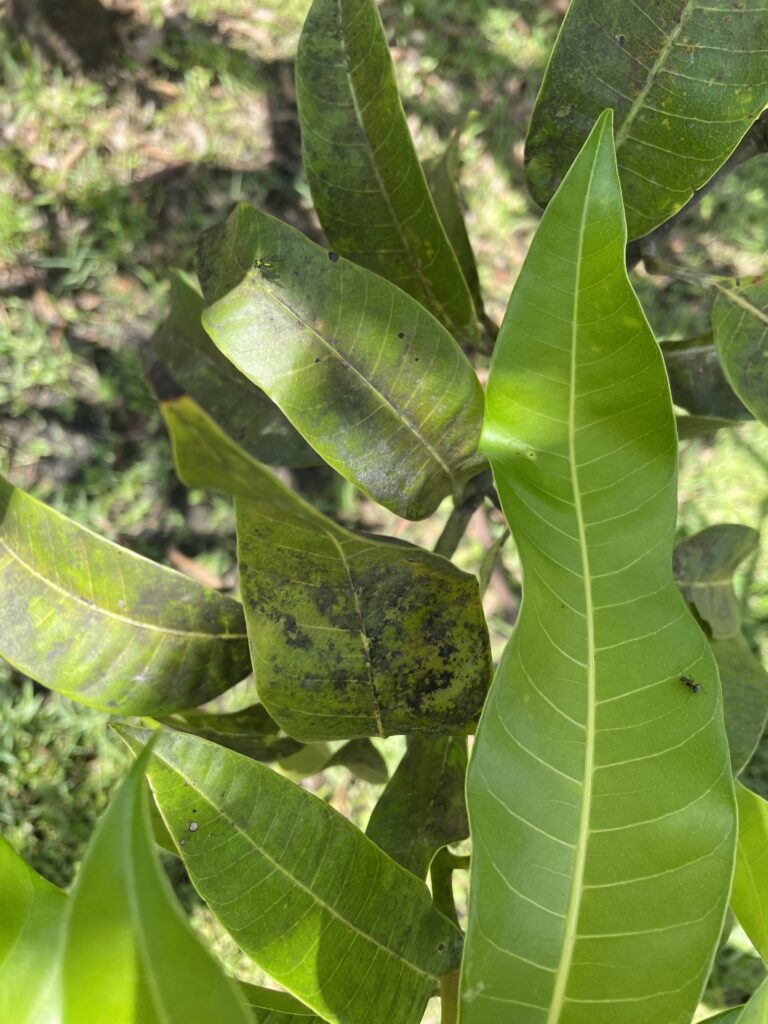
There is a lot of information out there about how to trim a mango tree but this is my condensed, filtered, and nitty-gritty version that gets the job done!
Tools To Trim A Mango Tree
Before I get into the tips on pruning mango trees, let me tell you what tools I used to trim our tree:
*This blog uses affiliate links. As an Amazon Associate I earn from qualifying purchases, at no additional cost to you.
* Gloves are needed because mango trees excrete urushiol, which is a chemical similar to that in poison ivy and some people can get contact dermatitis from it.
5 TIPS TO TRIM A MANGO TREE
I have compiled the five tips that I feel are most important to trim your mango tree.
This is exciting stuff!!
Here is the video on How to Trim a Mango Tree
1. When to Trim A Mango Tree: Right After Harvest
In Florida, it seems July is the big mango harvest season. You pass by beautiful trees just bursting with so much fruit that the limbs are straining and hanging low under their weight
…except ours.
That’s why I needed to trim…in hopes we too could have a bumper mango crop next season!
So, the general rule is to trim mango trees right after harvest.
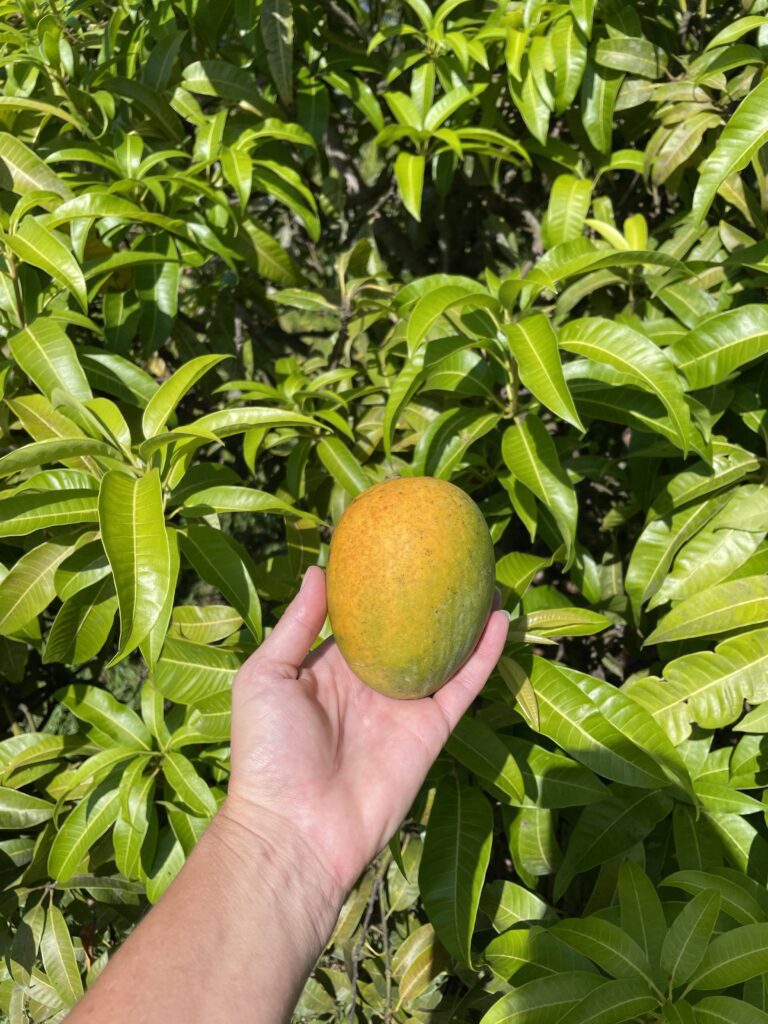
You could stretch it out a bit but you must get it done before it starts the growing and flowering season.
When to trim a mango tree in Florida is August/September, so that’s what I did!
In other areas of the world, just follow the general rule: Right After the Harvest.
2. No More Than 3-4 Trunks
As with anything, you need a strong foundation to support a structure, whether it be a building or a tree.
For your mango tree, you have your main trunk and off of it, there should be no more than 3-4 trunks.
All branches thereafter should then grow off of those 3-4 trunks and no more should grow off of the main base trunk.
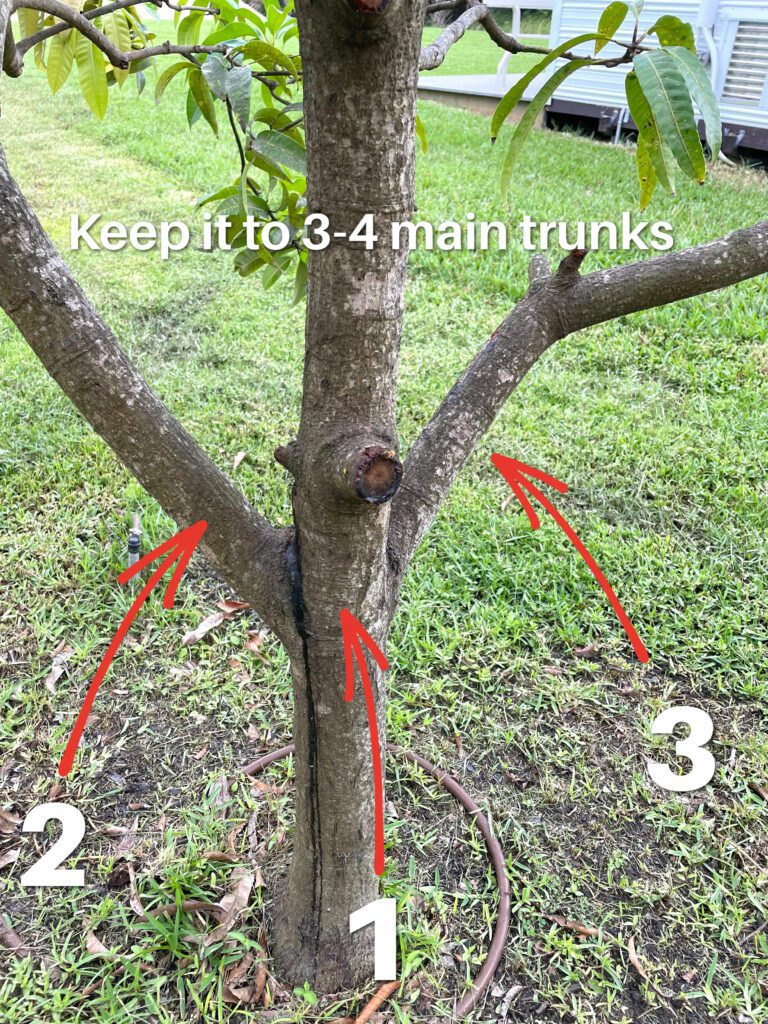
If you see one growing off of the main base trunk…lop it right off!
Usually, if you bought a mango tree from a nursery, the trunks have already been established. If you are growing from a seed or cutting, you will need to trim it accordingly.
3. Four Feet Off The Ground
The canopy of the tree can and likely will spread wide. The lowest part of the canopy (the lowest branches and leaves) should be 4 feet off the ground.
Ours was definitely lower and when we did have fruit on them, the branches hung down to the ground.
NO LOW-HANGING FRUIT!
I wish I had read up on pruning mango trees sooner!
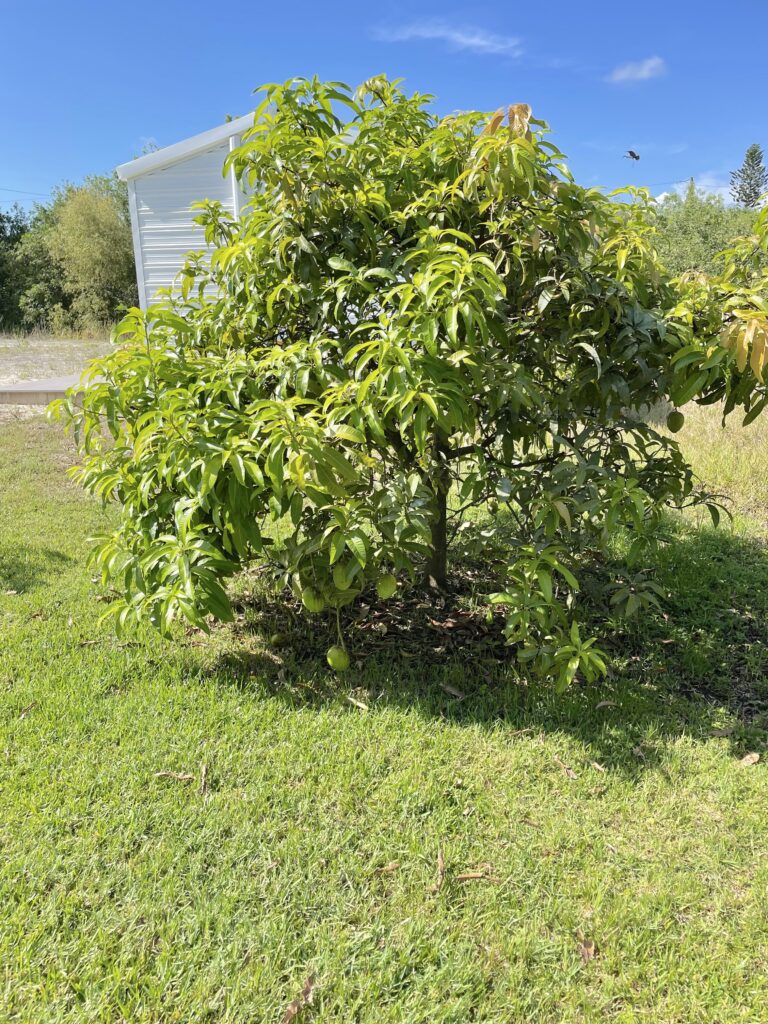
The purpose of having the canopy cut up to 4 feet is to allow access for weeding, mowing, and fertilizing.
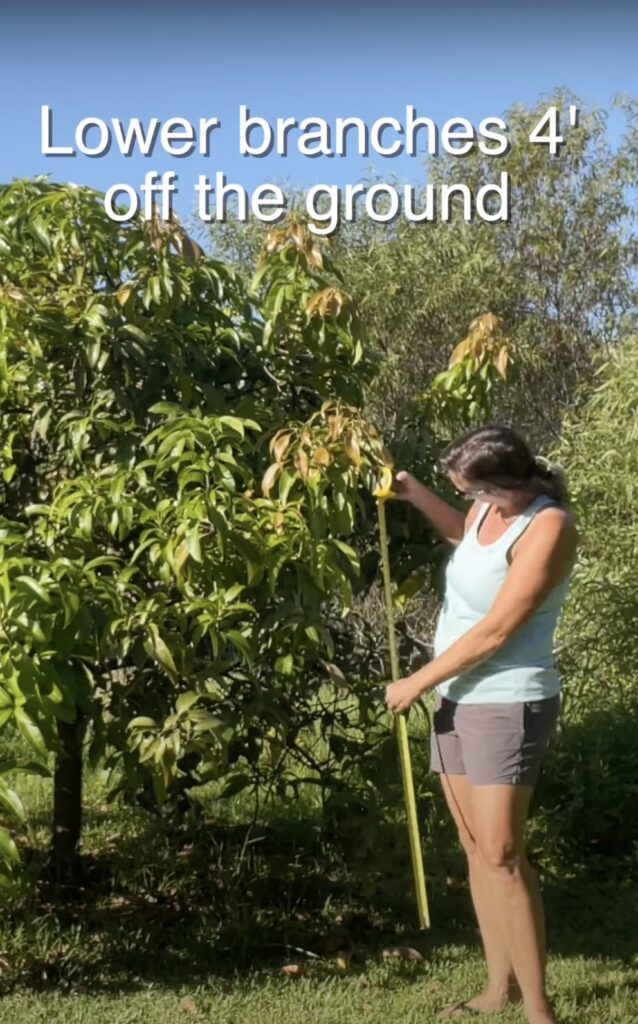
We have also found that raccoons and palm rats are more likely to gnaw on the low-hanging fruit and spoil it for the rest of us!
4. Dead and Diseased
When it comes to pruning mango trees, this one seems like a no-brainer.
Cut all the dead and diseased limbs and branches from the trees. Also, you need to remove the diseased leaves.
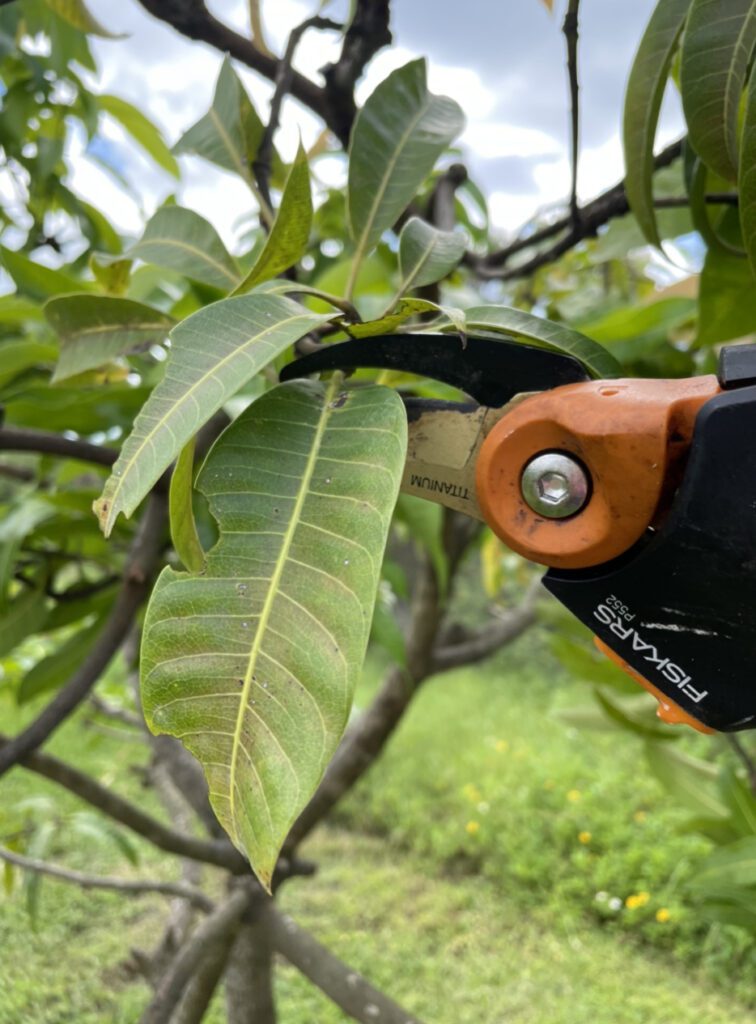
When I decided to take over the care of our trees, our mango tree leaves and some of the limbs were covered in a black sooty mold.
It’s poop from sap-sucking bugs that starts to mold. The poop is called honeydew.
Kinda gross.
Anyway, once I got rid of that mess and when harvest time was over, I could get to work on the pruning.
I took off all the dead limbs and branches. With the right tools, they are pretty easy to remove.
Then, any branch or leaf that had spots or any leftover poop mold was taken off.
I was going to give this tree every opportunity to thrive!
5. Trim Vertical Growth
This is one that I found very interesting. When you trim the branches, you are trimming the growth that is vertical (up and down).
It’s better to let the tree grow wide because it will be exposed to more sun.
Also, removing the vertical growth lightens the weight of the branches, so they have room and can handle the additional growth and fruit.
Honestly, this one confused me a little bit at first, until I got into it. Once you do, you really start to see it and understand why.
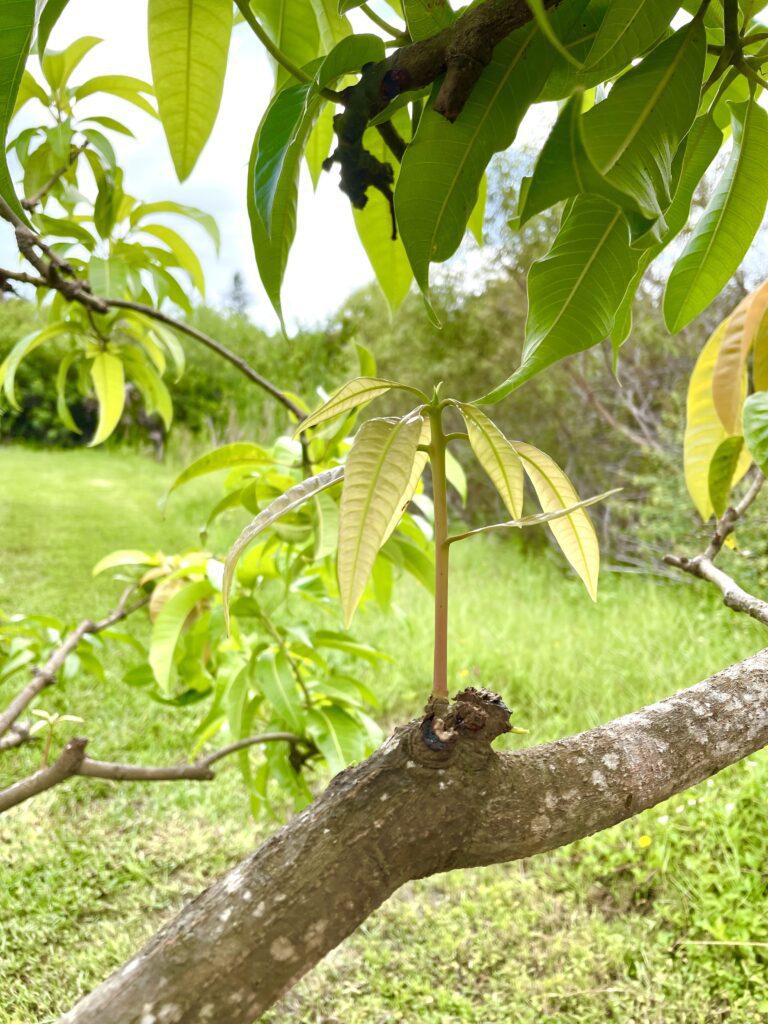
We had unknowingly neglected our mango tree. It was way too dense and needed a good trim.
I put off this task for a few weeks because to prune a mango tree seemed a little intimidating. Turns out, it was not!
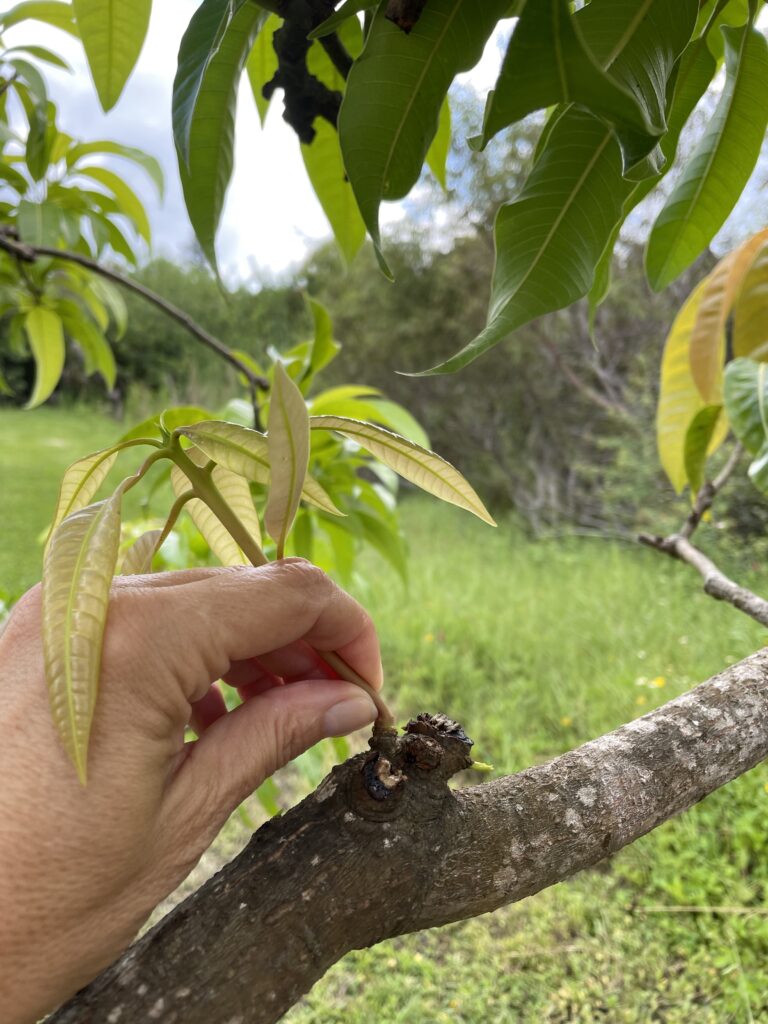
New growth can be snapped off with your fingers.
If you are wondering how to cut a mango tree, there isn’t much to it. If you have good garden tools like the ones above, pruning mango trees should go smoothly.
You just want to trim close to the base of the limb or branch you are cutting. You don’t want to leave a bunch of half limbs.
I did need to do a major trim to get the tree healthy again and to get it to produce more fruit. It looks a little sad now, but just wait until next season!
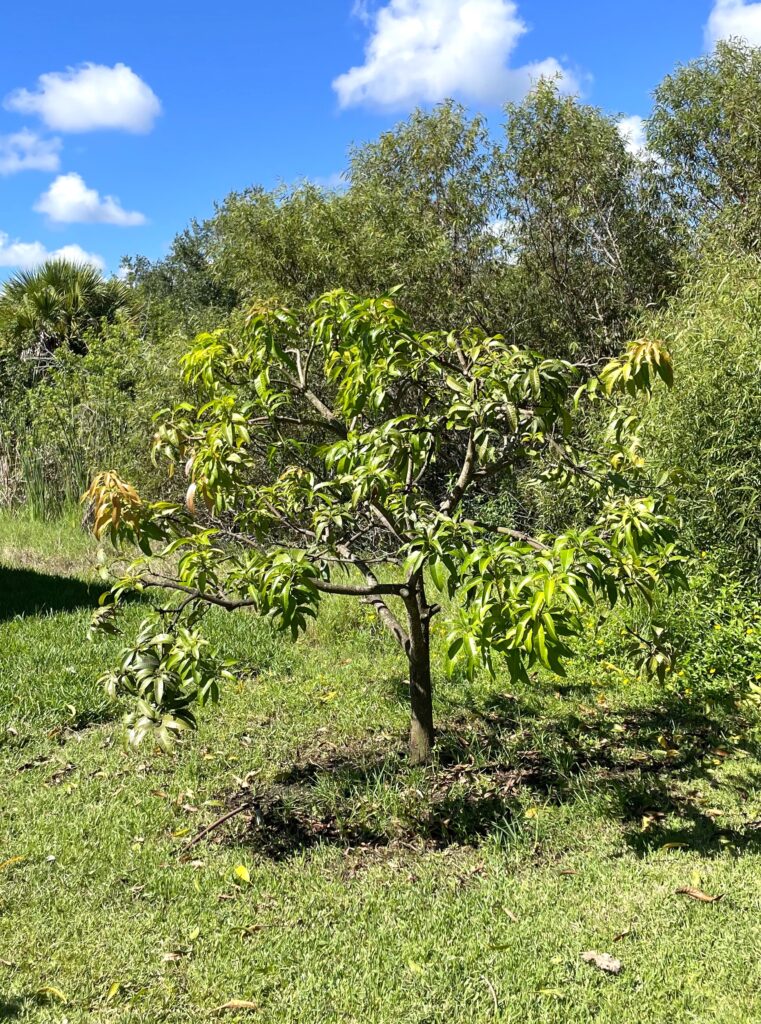
Whether you are doing a big-time trim or just pruning mango trees for maintenance, now you know how to do it!
I hope you found this helpful!
Next stop, the avocado tree!
Other Great Garden Posts For You!
Here are a few other gardening tips and project you may find helpful:
- 7 Tips For Growing Hostas
- Low-maintenance Plants for the Garden
- Recycled Garden Art
- Artichoke Garden Art
- Recycled Ladybug
Amazing Mango Tree Home Decor and Mango Fruit Tools
Thanks for stopping by! Remember: Life’s too short not to shimmer, so grab your glue gun and your glitter!™ Stay safe!
Mona

